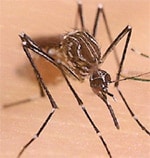By Shelly Hwang
Diabetes, Depression, and Dementia are three of the most common medical conditions among Americans today. A recent study released on March 5 by a group of researchers at the University of Washington (UW) revealed that depression in diabetic patients doubles the risk of developing dementia, a finding that may affect the way that depression is screened and treated in order to prevent the development of other diseases.
Dementia is the gradual loss of cognitive and reasoning abilities, including memory loss, wandering, inability to do basic math, and forgetting familiar things or people. Depression is a mental disorder marked by low mood and poor concentration. Diabetes is a medical condition in which a person has a high blood sugar level. While both diabetes and major depression have been shown to be separate risk factors for dementia, the effect of both diabetes and depression on dementia has not been studied. It turns out that adults with both conditions are twice as likely to develop dementia, compared with adults with only diabetes.
This project, led by Dr. Wayne Katon, a professor of psychiatry and behavior sciences at UW, is a part of the Pathways Epidemiological Follow-Up study, which examines adults from the Group Health Cooperative’s diabetes registry. Patients from nine clinics in western Washington State were studied for five years. 163 of 3,382 (4.8%) patients with diabetes alone developed dementia, while 36 of 455 (7.9%) of the diabetes patients with major depression were diagnosed with dementia. This presents a 2.7 fold increase of dementia in diabetic patients with depression.
Depression is common among individuals with diabetes. Previous studies found depression increases mortality rate among diabetes patients, in addition to health complications. However, the way the two diseases interact is unknown. Perhaps they interact by genetics, increasing stress levels, or resulting in unhealthy behaviors such as smoking, lack of exercise, and over-eating, which raise the risk of dementia. Diabetes is a known risk factor for dementia because it causes blood vessel problems, tissue damage, and increased blood sugar levels, which all increase odds of developing dementia. Although the link between depression, diabetes, and dementia is still not understood, it is useful for doctors to screen and treat for depression as a preventive measure against the development of cognitive deficits or dementia in diabetic patients.










